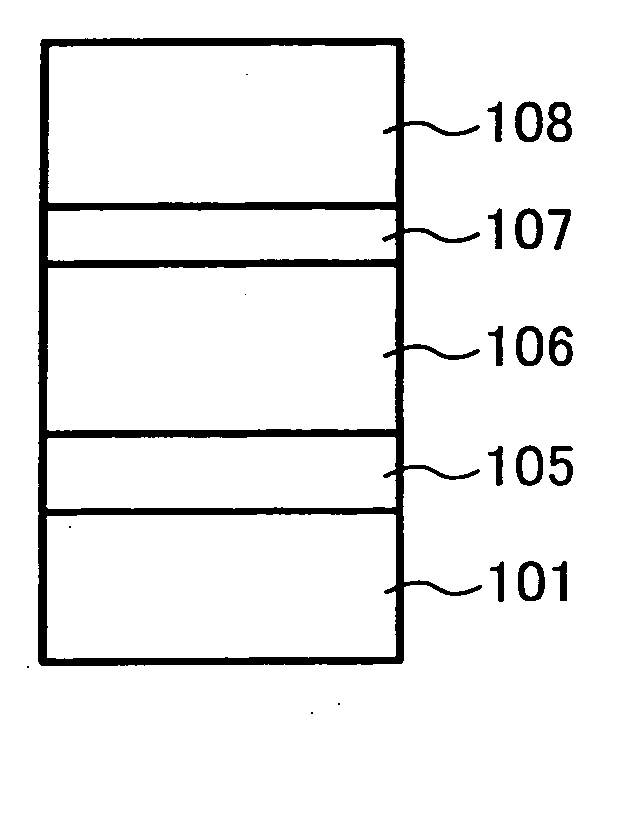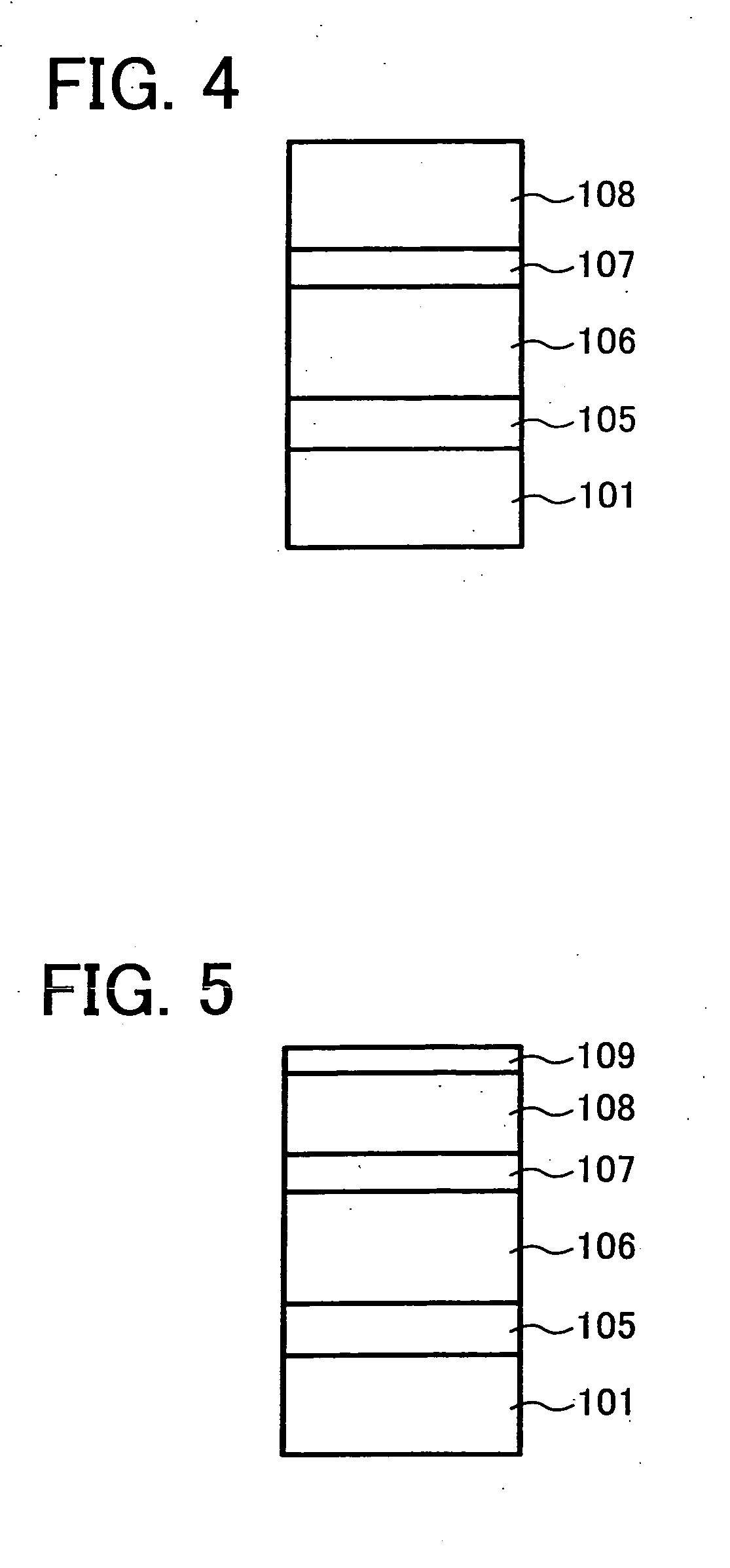Image bearing member, and image forming apparatus and process cartridge using the same
a technology of image bearing member and process cartridge, which is applied in the direction of electrographic process, instrumentation, corona discharge, etc., can solve the problems of increasing the dark decay of an image bearing member, significant productivity decline, background fouling, etc., and achieves the effect of stably performing image formation
- Summary
- Abstract
- Description
- Claims
- Application Information
AI Technical Summary
Benefits of technology
Problems solved by technology
Method used
Image
Examples
synthesis example 1
of Pigment
[0314] According to JOP 2001-19871, a pigment was prepared. That is, 29.2 g of 1,3-diiminoisoindoline and 200 ml of sulfolane were mixed and 20.4 g of titanium tetrabutoxido was dropped thereto in nitrogen atmosphere. Thereafter, the temperature was raised to 180° C., and the resultant was stirred for reaction for 5 hours while the reaction temperature was maintained in a range of from 170 to 180° C. After the reaction, the resultant was naturally cooled down and the precipitation was filtered. The filtered resultant was washed with chloroform until the obtained powder indicates the color of blue. Next, the resultant powder was washed with methanol several times. Further, subsequent to washing with hot water of 80° C. several times and drying, a coarse titanyl phthalocyanine was obtained. The titanyl phthalocyanine was dissolved in strong sulfuric acid the amount of which was 20 times as much as that of the titanyl phthalocyanine. The resultant was dropped to iced water th...
synthesis example 2
of Pigment
[0323] Water paste of titanyl phthalocyanine pigment was synthesized according to the method of Synthesis Example 1 of pigment and titanyl phthalocyanine crystal having a primary particle diameter smaller than that of Synthesis Example 1 of pigment was obtained.
[0324] 400 parts of tetrahydrofuran was added to 60 parts of the water paste before crystal conversion obtained in Synthesis Example 1. The mixture was vigorously stirred (2,000 rpm) with HOMOMIXER (Mark II f model, manufactured by Kenis Ltd.) at room temperature. When the color of navy blue of the water paste was changed to the color of light blue (20 minutes after the stirring started), the stirring was stopped and filtration with a reduced pressure was performed immediately. The crystal obtained on the filtration device was washed with tetrahydrofuran and a wet cake of a pigment was obtained. The resultant wet cake was dried with a reduced pressure (5 mmHg) at 70° C. for two days to obtain 8.5 parts of titanyl p...
synthesis example 3
of Pigment
[0329] A pigment was prepared based on the method described in Example 1 of JOP H01-299874 (Japanese patent No. 2512081). That is, the wet cake prepared in Synthesis Example 1 of pigment was dried. 1 g of the dried product was added to 50 g of polyethylene glycol and the mixture was pulverized with 100 g of glass beads using a Sand mill. After crystal transfer, the resultant was washed with dilute sulfuric acid and an aqueous solution of ammonium hydroxide in this order. After drying, a pigment was obtained as Pigment No. 3. No halogenated material was used in the raw material of Synthesis Example 3 of pigment.
PUM
| Property | Measurement | Unit |
|---|---|---|
| Length | aaaaa | aaaaa |
| Fraction | aaaaa | aaaaa |
| Thickness | aaaaa | aaaaa |
Abstract
Description
Claims
Application Information
 Login to View More
Login to View More - R&D
- Intellectual Property
- Life Sciences
- Materials
- Tech Scout
- Unparalleled Data Quality
- Higher Quality Content
- 60% Fewer Hallucinations
Browse by: Latest US Patents, China's latest patents, Technical Efficacy Thesaurus, Application Domain, Technology Topic, Popular Technical Reports.
© 2025 PatSnap. All rights reserved.Legal|Privacy policy|Modern Slavery Act Transparency Statement|Sitemap|About US| Contact US: help@patsnap.com



